| |
|
|
| |
The Cicada and Lace Moth.
Mon 17th September, 2012
|
|
|
|
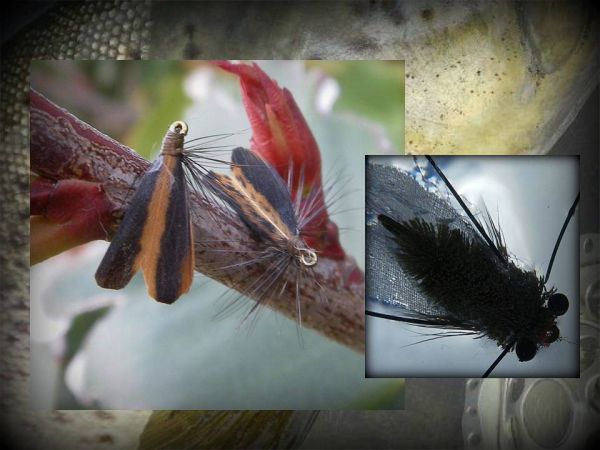
We're back on Taupahi Road this time at Creel Tackle and to round off the series a couple of dry flies from " Scotty " and Steve. Again they wanted to plumb for caddis but after I explained that was a case of " join the queue " they came up with two very good second choices ... the Cicada and Passion Vine Hopper. Both of these terrestrials first appear in significant numbers at roughly the same time, usually between January and March but this can vary depending on climatic conditions. 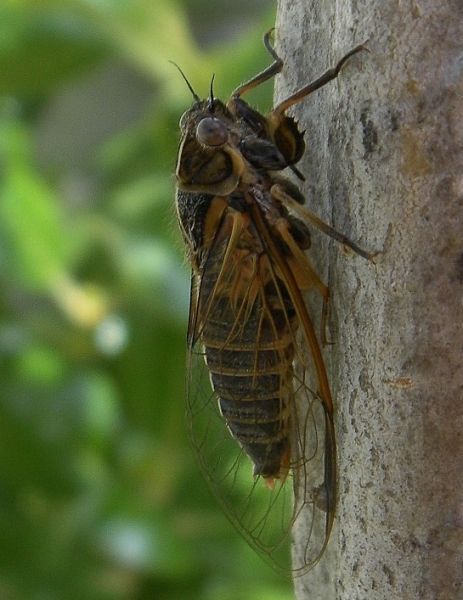
There is already information about the Cicada on the site, click on the Quick Guides link, then 2010 and open January. Its impossible to predict how good or bad the cicada fishing is going to be on the Tongariro. But if you are lucky enough to be here during a good year then your in for some truly awesome sport. If you've never tried fishing a dry fly you won't get a better time to learn, especially when the trout first become interested in these big bugs. Don't worry too much about delicate presentation, I'm not suggesting that you can thrash the water to a foam but as long as you achieve a reasonable cast there's no need to panic if your fly lands a little heavily. Cicada's have been around for a long time but they still haven't quite got the hang of flying and trout are well used to them falling into the river with a plop!. 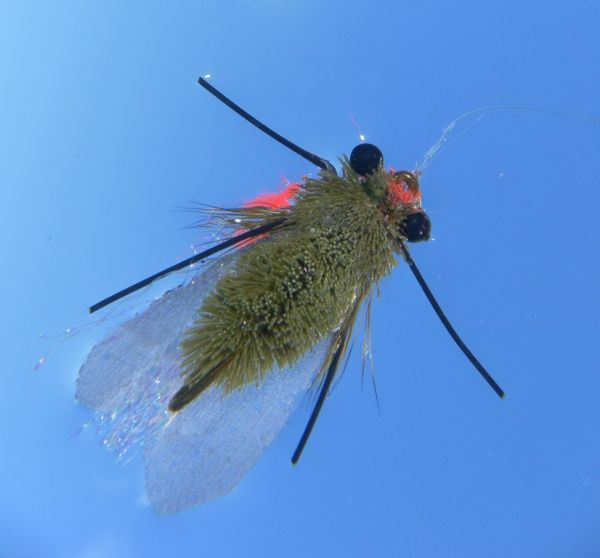
Its likely this sound is probably one of the triggers that alerts them to the fact that another year has passed and these large insects are once again on the menu. There are several types available but one of the most popular and durable is made of dyed deer hair which has been cut to shape and with the addition of eyes, wings and a little bit of sparkle does a pretty good job of representing the real thing.
I find these work best at the start of the cicada season. Later the fish seem to get a bit bored with them and they become much less effective. 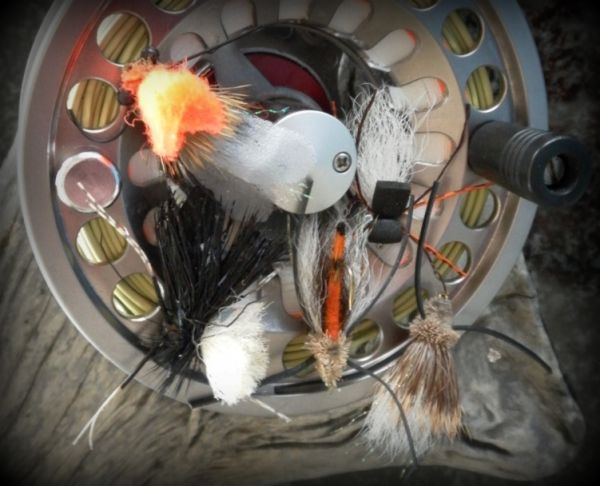 Luckily by the time that happens they should be really switched on to taking big surface flies. With plenty of patterns to choose from just change to one of the more bizarre rubber leg creations which are tied in all sorts of colors using foam and other materials. When trout become pre-occupied with these large terrestrials they're one of the few food items they'll move any distance for. Try drifting one along the feed lanes in a pool, occasionally giving it a couple of twitches as it travels downstream. Even if there aren't obvious signs of trout feeding the sight of a big juicy cicada apparently struggling on the surface will often tempt them up from the depths. The deer hair version also makes a great indicator and you can easily improve its visibility by tying in a brightly colored tag behind the eyes. Luckily by the time that happens they should be really switched on to taking big surface flies. With plenty of patterns to choose from just change to one of the more bizarre rubber leg creations which are tied in all sorts of colors using foam and other materials. When trout become pre-occupied with these large terrestrials they're one of the few food items they'll move any distance for. Try drifting one along the feed lanes in a pool, occasionally giving it a couple of twitches as it travels downstream. Even if there aren't obvious signs of trout feeding the sight of a big juicy cicada apparently struggling on the surface will often tempt them up from the depths. The deer hair version also makes a great indicator and you can easily improve its visibility by tying in a brightly colored tag behind the eyes. 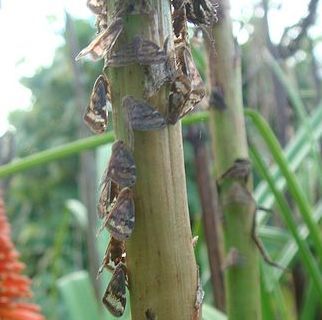
The other dry fly from Creel is another summer phenomenon which trout latch on to ... the Lace Moth or to give it its proper name the Passion Vine Hopper { Scolypopa Australis } This West island import reached New Zealand in 1876 and is regarded as a pest species. They can be found in the warmer parts of both North and South Island and it isn't only commercial fruit growers that have to watch out for them. Where I live in Kapiti they are a real headache for summer gardeners and despite their name these sap sucking insects will feed and lay their eggs on all kinds of native flora. 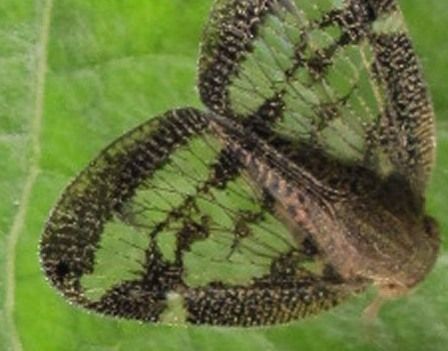 Large infestations of hoppers on any plant will quickly weaken it causing it to wither and eventually die. When they feed on the Coriara shrub more problems occur because the plant contains the neurotoxin tutin. In New Zealand the plant is commonly called the "Tutu" or "Tut" pronounced "Toot" and has a Maori origin which probably refers to the toxin. As the insects digest the sap they excrete a poisonous honeydew which is gathered by foraging bees and taken back to the hive where they unknowingly contaminate the honey with tutin. The last recorded death from eating toxic honey was in the 1890's but there are still non fatal poisonings from time to time. So far only a few areas of New Zealand have been identified as high risk places where this toxic honey has frequently turned up. But in these places beekeepers have to closely monitor the spread of Coriaria plants and passion hopper populations within a three kilometer radius of their apiaries. Like cicadas the females insert the eggs in rows inside the soft inner stem of the host plant where they overwinter for six months before the wing-less nymphs appear between October and December. These are lighter in color than the adults but with the same mottled brown markings and have curious white filaments protruding from their rear end. This untidy waxy tuft is responsible for their nickname ... fluffy bums! Large infestations of hoppers on any plant will quickly weaken it causing it to wither and eventually die. When they feed on the Coriara shrub more problems occur because the plant contains the neurotoxin tutin. In New Zealand the plant is commonly called the "Tutu" or "Tut" pronounced "Toot" and has a Maori origin which probably refers to the toxin. As the insects digest the sap they excrete a poisonous honeydew which is gathered by foraging bees and taken back to the hive where they unknowingly contaminate the honey with tutin. The last recorded death from eating toxic honey was in the 1890's but there are still non fatal poisonings from time to time. So far only a few areas of New Zealand have been identified as high risk places where this toxic honey has frequently turned up. But in these places beekeepers have to closely monitor the spread of Coriaria plants and passion hopper populations within a three kilometer radius of their apiaries. Like cicadas the females insert the eggs in rows inside the soft inner stem of the host plant where they overwinter for six months before the wing-less nymphs appear between October and December. These are lighter in color than the adults but with the same mottled brown markings and have curious white filaments protruding from their rear end. This untidy waxy tuft is responsible for their nickname ... fluffy bums! 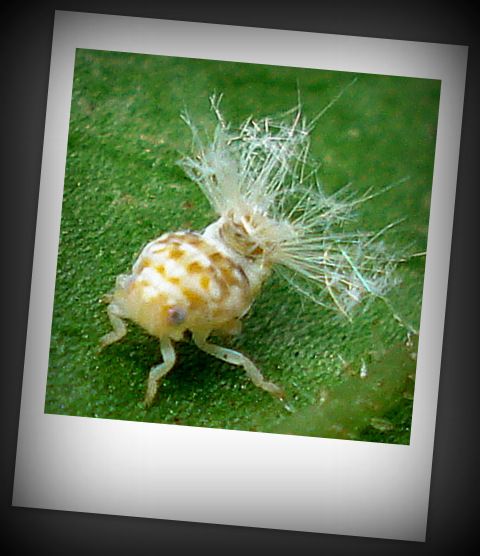 Like the nymphal stage of other insects, as they grow they go through a series of instars, finally appearing in January through to April as adult vine hoppers. The Tongariro's biggest hatches occur in late January and the first weeks of February and is particularly noticeable downriver. The foliage on both sides from the Bain down used to be covered with lace moths and on breezy summer days many of them would end up in the drink. I say " used to " because things have changed down there big time with nearly all of the over-hanging cover gone from the true left bank. Many of the old spots are unrecognizable and it remains to be seen how this will affect the dry fly fishing in this part of the river. Elsewhere on the Tongariro trout soon notice this steady stream of easy pickings and you will often see fish feeding on them for hours totally oblivious to anything else coming their way. Unfortunately not all these trout are monsters because the abundance of lace moths also coincides with a river full of juvenile trout making their way to the lake. However there are usually plenty of chances of something much better and although lace moth fishing can be a frustrating experience its possible to have a lot of fun when you get it right. Like the nymphal stage of other insects, as they grow they go through a series of instars, finally appearing in January through to April as adult vine hoppers. The Tongariro's biggest hatches occur in late January and the first weeks of February and is particularly noticeable downriver. The foliage on both sides from the Bain down used to be covered with lace moths and on breezy summer days many of them would end up in the drink. I say " used to " because things have changed down there big time with nearly all of the over-hanging cover gone from the true left bank. Many of the old spots are unrecognizable and it remains to be seen how this will affect the dry fly fishing in this part of the river. Elsewhere on the Tongariro trout soon notice this steady stream of easy pickings and you will often see fish feeding on them for hours totally oblivious to anything else coming their way. Unfortunately not all these trout are monsters because the abundance of lace moths also coincides with a river full of juvenile trout making their way to the lake. However there are usually plenty of chances of something much better and although lace moth fishing can be a frustrating experience its possible to have a lot of fun when you get it right. 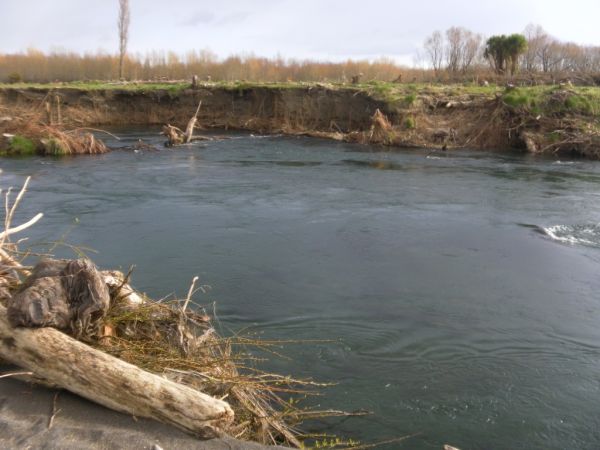
The complete series on dry flies for the Tongariro, minus the weekly reports has been uploaded to the Quick Guides section, again at no extra charge for regular Tongariro anglers.
And this weeks fishy quote could have been written for the river :
"There will be days when the fishing is better than one's most optimistic forecast, others when it is far worse. Either is a gain over just staying home." ~ Roderick Haig-Brown
The name leads me onto a conversation I had with David Grant from Wellington who was up with a few mates on one of their regular Turangi trips. I've bumped into him a few times over the last couple of years and we always have a natter. David had been on the river all week and his overall impression of the fishing closely mirrors that of other anglers I spoke to. We were actually talking about the fate of the lower river but the email and pic he very kindly sent me also ties in with this report ... that's him {below right} holding the jack amongst some of this weeks other images.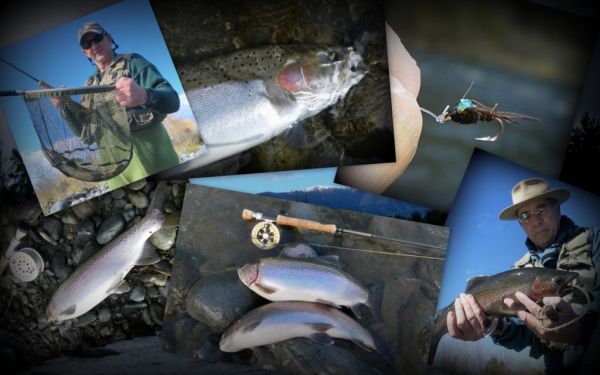 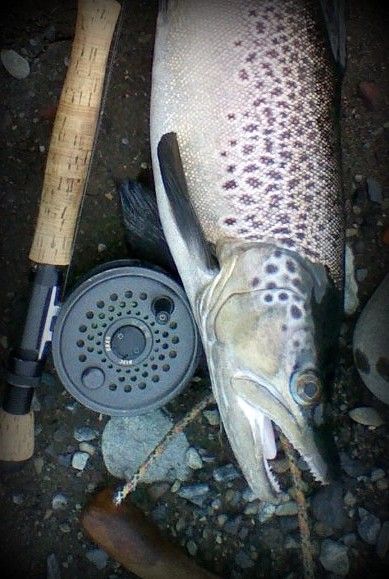
Good afternoon Mike,
" Firstly, the photo attached is the 5lb brown caught at the bend in the bottom third of the Reed pool at 6.00 pm on 3 Feb 2012. It took a cicada imitation dry fly and when opened up contained 30 cicada (Amazing how time exaggerates the memory). I had missed an earlier take by striking too early and pulling the fly out of the trout's mouth before the fly could be properly set ... over excitement.
Secondly, I fished this week from Monday 2.00 PM to noon on Friday.The first couple of days the water was a little cloudy and globugs were successful. I also had some success with the wetline. From Wednesday the water started to clear quickly and I used a small hare and copper #14 successfully.
I think the fish are better condition and size than at the same time last year and there have been more of them. Mind you my logbook shows the water clear and the weather fine this time last year ".
Thanks for the contribution David.
The unsettled weather during the week and subsequent heavy rain on the weekend kept the fish coming and there is definitely a more optimistic vibe on the river. Lots of action under the bridge although some of the other town pools were sometimes a little slow. I was lucky to be right place right time on a deserted stretch of the upper river and had my best few hours nymphing for what must be four years. The numbers and quality of the trout, particularly on Friday morning, reminded me of what it used to be like when the Tongariro was firing. When I got back to Turangi I called in to see Ross at T.R.M. who was parking up his mobility scooter as I arrived. He had been out doing his roving reporter bit and told me I wasn't the only one walking around with a smile on his face. Best flies in my box this week ... globugs ... small dark flashbacks and several freshies picked up a black rubber leg bomb. Its tied with two tungsten beads and I think is one of Manic's called a Black Uglie. Saturdays recreational release was dwarfed by the 300 cumec flood that immediately followed it. This will set things up at a time, that in recent years has seen the best runs of the winter / spring. Judging by some of the trout already in the river the next few weeks will be a fantastic time to fish the Tongariro ... see you out there.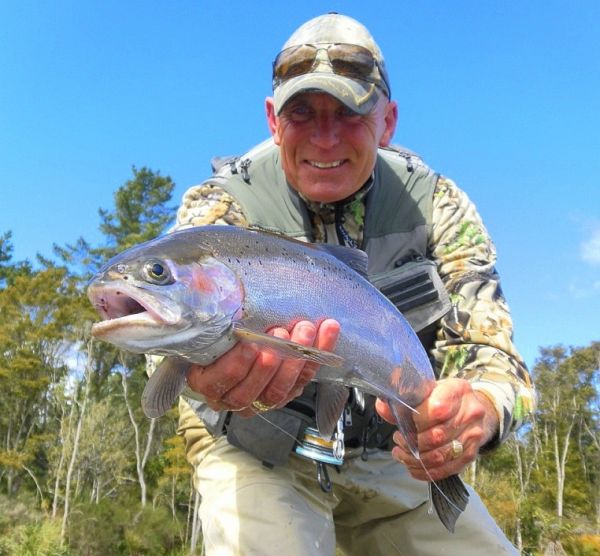
Tight Lines Guys
Mike. |
|
|
| Back to Top |
|
|
|
|
|
|
|